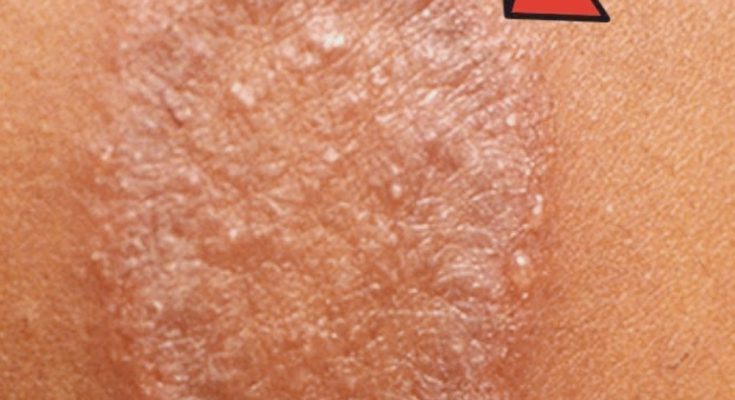As a large language model, I am not a doctor and cannot provide medical advice. However, I can give you a detailed explanation of ringworm (tinea), covering its symptoms, signs, causes, and common treatments, for informational purposes.
Ringworm (Tinea): An Explanation
Despite its name, ringworm is not caused by a worm. It is a common fungal infection of the skin, hair, or nails. The “ring” in its name comes from the characteristic circular, red, itchy rash that often develops. The medical term for ringworm is tinea, and the specific name varies depending on the affected body part (e.g., tinea corporis for body, tinea pedis for feet).
1. Causes of Ringworm
Ringworm is caused by a group of fungi called dermatophytes. These fungi thrive in warm, moist environments and feed on keratin, a protein found in skin, hair, and nails.
You can contract ringworm through:
- Human-to-human contact: Direct skin-to-skin contact with an infected person. This is the most common mode of transmission.
- Animal-to-human contact: Contact with an infected animal, such as cats, dogs, cows, or other pets. Kittens and puppies are common carriers.
- Object-to-human contact: Touching contaminated objects, such as towels, bedding, combs, brushes, clothing, or shower floors used by an infected person.
- Soil-to-human contact: Less common, but the fungi can live in soil and infect humans through prolonged contact.
Risk Factors:
- Living in a warm, humid climate.
- Excessive sweating.
- Participating in contact sports (e.g., wrestling).
- Wearing tight clothing or shoes that trap moisture.
- Having a weakened immune system (e.g., due to diabetes, HIV/AIDS, or certain medications).
- Sharing personal items.
- Poor hygiene.
2. Symptoms & Signs of Ringworm
The symptoms and signs of ringworm vary depending on the part of the body affected. However, the classic “ring” appearance is a common thread for many forms.
Here are the different types of ringworm and their associated signs:
a) Tinea Corporis (Ringworm of the Body)
- Symptoms/Signs:
- Typically starts as a flat, scaly, reddish patch on the skin.
- Gradually expands outwards, forming a raised, red, scaly border with a clearer, sometimes scaly or bumpy, center. This creates the characteristic “ring” appearance.
- The center may become less red or even skin-colored as the infection spreads outwards.
- Itching is common and can be intense.
- The lesions can be single or multiple.
b) Tinea Pedis (Athlete’s Foot)
- Symptoms/Signs:
- Most commonly affects the spaces between the toes, especially between the fourth and fifth toes.
- Itching, stinging, and burning sensations between the toes or on the soles of the feet.
- Redness, scaling, flaking, or peeling skin.
- Cracking or blistering, especially in severe cases.
- The skin may appear wet or macerated between the toes.
- Can sometimes spread to the toenails (onychomycosis) or hands.
c) Tinea Cruris (Jock Itch)
- Symptoms/Signs:
- Affects the groin, inner thighs, and buttocks.
- An itchy, red, sometimes raised rash, often with a clear border that may blister or ooze.
- The rash can be ring-shaped or more irregularly shaped.
- Often appears on both sides.
- More common in men.
d) Tinea Capitis (Ringworm of the Scalp)
- Symptoms/Signs:
- Common in children.
- Scaly patches on the scalp that may be red or gray.
- Hair loss (alopecia) in the affected areas, leading to bald patches. Hair may break off at or near the scalp level.
- Tiny black dots on the scalp (from broken hairs).
- Itching.
- Can sometimes lead to a kerion, which is a severely inflamed, swollen, boggy, and pus-filled lesion on the scalp, potentially causing permanent scarring and hair loss.
e) Tinea Unguium (Onychomycosis – Ringworm of the Nails)
- Symptoms/Signs:
- Affects fingernails or, more commonly, toenails.
- Nails become thickened, brittle, crumbly, or discolored (yellow, brown, or white).
- The nail may separate from the nail bed.
- Often starts at the tip of the nail and spreads towards the base.
- Usually not painful unless severe or if footwear causes pressure.
f) Tinea Manuum (Ringworm of the Hand)
- Symptoms/Signs:
- Less common, often unilateral (affecting one hand) and can be associated with athlete’s foot (“two feet, one hand syndrome”).
- Dry, scaly, red patches on the palm or fingers.
- Can look like extreme dryness or hyperkeratosis (thickening of the skin).
- May have slight redness and subtle itching.
g) Tinea Barbae (Ringworm of the Beard Area)
- Symptoms/Signs:
- Affects the beard and mustache area in men.
- Red, itchy, scaly patches or bumps.
- Hair in the affected area may break off or fall out.
- Can be associated with pustules or nodules.
3. Diagnosis
Diagnosis is typically made by a doctor based on:
- Physical examination: The characteristic appearance of the rash often suggests ringworm.
- Skin scrapings (KOH prep): The doctor may gently scrape a small sample of skin from the affected area. This sample is then examined under a microscope with potassium hydroxide (KOH), which dissolves skin cells, making the fungal elements (hyphae) easier to see.
- Fungal culture: Sometimes, a sample of skin, hair, or nail clippings is sent to a laboratory for a fungal culture. This is more time-consuming (can take weeks) but can confirm the diagnosis and identify the specific type of fungus, which can help guide treatment.
- Wood’s lamp examination: For tinea capitis, a Wood’s lamp (a special ultraviolet light) can sometimes make infected hairs glow, though not all fungi that cause tinea capitis fluoresce.
4. Treatment
Treatment for ringworm depends on the location and severity of the infection.
a) Topical Antifungal Medications
- For most cases of tinea corporis, tinea pedis, tinea cruris, and tinea manuum, over-the-counter or prescription antifungal creams, lotions, powders, or sprays are effective.
- Common active ingredients include:
- Clotrimazole
- Miconazole
- Terbinafine
- Ketoconazole
- Econazole
- Oxiconazole
- Application: Apply the medication to the affected area and the surrounding skin (at least 1-2 cm beyond the visible rash) once or twice daily for 2 to 4 weeks, or as directed by your doctor. It’s crucial to continue treatment for at least a week after the rash appears to be gone to ensure all fungal spores are eradicated.
b) Oral Antifungal Medications
- Oral antifungals are typically prescribed for:
- More widespread or severe skin infections.
- Infections that don’t respond to topical treatments.
- Tinea capitis (ringworm of the scalp), as topical creams cannot penetrate the hair follicle adequately.
- Tinea unguium (onychomycosis), as topical treatments often struggle to reach the fungus within the nail plate.
- Common oral antifungal medications include:
- Terbinafine (Lamisil)
- Griseofulvin (often preferred for children with tinea capitis)
- Itraconazole
- Fluconazole
- Duration: Treatment can range from several weeks to several months, especially for nail infections.
- Side Effects: Oral antifungals can have side effects, including liver problems, so blood tests may be required to monitor liver function during treatment.
c) Adjunctive Measures
- Hygiene: Keep the affected area clean and dry. Fungi thrive in moist environments.
- Clothing: Wear loose-fitting clothing made of breathable materials (e.g., cotton) to reduce moisture buildup. Change socks and underwear daily.
- Avoid sharing: Do not share towels, clothing, combs, or other personal items.
- Disinfect: Clean and disinfect contaminated surfaces, especially in bathrooms and showers.
- Treat animals: If an animal is the source, it must also be treated by a veterinarian.
- Scalp care (for tinea capitis): Medicated shampoos (e.g., selenium sulfide or ketoconazole shampoo) can help reduce the shedding of fungal spores and prevent spread, but they are not sufficient as a standalone treatment for scalp ringworm.
Important Reminders:
- Consult a doctor: It’s always best to see a healthcare professional for diagnosis and treatment of ringworm, especially if the rash is extensive, severe, or doesn’t improve with over-the-counter medications.
- Complete the full course of treatment: Even if symptoms improve, stopping treatment early can lead to recurrence.
- Treat all affected areas and contacts: To prevent re-infection or spread to others.
By understanding the causes, recognizing the signs, and following appropriate treatment, ringworm can be effectively managed and cleared.

